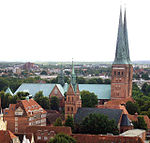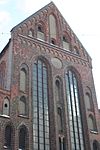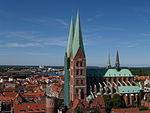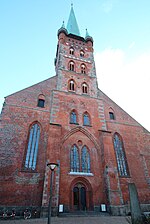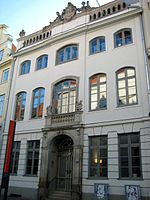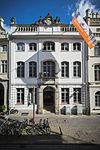St. Anne's Museum Quarter, Lübeck

St. Anne's Museum Quarter (German: Museumsquartier St. Annen) was previously an Augustinian nunnery, St. Anne's Priory (German: Sankt-Annen-Kloster). Since 1915 it has housed St. Anne's Museum, one of Lübeck's museums of art and cultural history containing Germany's largest collection of medieval sculpture and altar-pieces, including the famous altars by Hans Memling (formerly at Lübeck Cathedral), Bernt Notke, Hermen Rode, Jacob van Utrecht and Benedikt Dreyer. These are exhibited on the building's first floor is a museum and art exhibition hall located near St. Giles Church and next to the synagogue in the south-east of the city of Lübeck, Germany. On the building's second floor is exhibited a large collection of home decor items and interiors of different periods, showing how the area's citizens lived from medieval times up to the 1800s. A modern addition houses special exhibits. The museum is part of the Lübeck World Heritage site.
Excerpt from the Wikipedia article St. Anne's Museum Quarter, Lübeck (License: CC BY-SA 3.0, Authors, Images).St. Anne's Museum Quarter, Lübeck
Sankt-Annen-Straße, Lübeck Innenstadt (Innenstadt)
Geographical coordinates (GPS) Address Nearby Places Show on map
Geographical coordinates (GPS)
| Latitude | Longitude |
|---|---|
| N 53.862666666667 ° | E 10.689138888889 ° |
Address
Sankt Annen-Museum
Sankt-Annen-Straße 15
23552 Lübeck, Innenstadt (Innenstadt)
Schleswig-Holstein, Germany
Open on Google Maps



